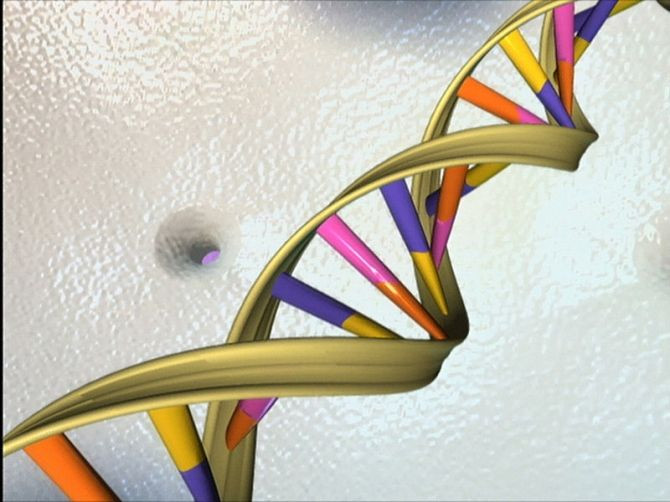Scientists Sequence a Person's Entire Genome With Just a Single Cell

Scientists are now able to reproduce a person's entire genome using only a single cell.
The breakthrough technique could lead to the development of early cancer treatment in the future by giving doctors to ability to obtain a genetic "fingerprint" of a person's cancer from circulating tumor cells.
Researchers, writing in the new study published in the journal Science, invented a method called MALBAC (Multiple Annealing and Looping-based Amplification Cycles) that can reproduce an entire DNA molecule from just one cell.
"If you give us a single human cell, we report to you 93 percent of the genome that contains three billion base pairs, and if there is a single base mutation, we can identify it with 70 percent detectability, with no false positives detected," researcher Xiaoliang Sunney Xie, the Mallinckrodt Professor of Chemistry and Chemical Biology, said in a statement. "This is a major development."
In another study published simultaneously, researchers from Xie's laboratory working with scientists at Peking University in China, demonstrated the new technique by sequencing 99 sperm cells from one individual and analyzing the paternal and maternal contribution to each cell's genome.
Researchers explain that MALBAC is a type of DNA amplification that gives researchers the ability to duplicate the single DNA molecule present in a cell many times so it can be analyzed in the lab.
"While other methods of DNA amplification exist, most-like polymerase chain reaction (PCR) or multiple displacement amplification (MDA)-suffer from a specific problem," Xie said. "Because they amplify exponentially, both have bias. They dramatically amplify some parts of the genome, but amplify others very little."
Xie explained that MALBAC relies on linear amplification, which minimizes the sequence-dependent bias.
Like other methods, the new amplification process starts by splitting the DNA double helix into two single strands. Researchers then add a random "primer" or tin fragments of DNA that binds to dozens of locations along each strand.
Afterwards, researchers use a DNA polymerase, a cellular "machine" that synthesizes DNA as cells divide, to extend those primers. Researchers said that using the cellular machine can extend the primers from as few as seven bases to as many as 2,000.
Researchers then heat the sample and break the elongated primers apart from the original DNA, which yield half products, which are also amplified using the same primers.
Researchers said that after the half products are amplified, the two ends of the DNA combine and form a loop that prevents them from being amplified again. After that, the leftover half products and the original DNA are subject to another cycle of amplification, and after five cycles of linear pre-amplification the full product is amplified by PCR to produce enough material for sequencing.
Xie notes that DNA polymerases do occasionally make errors, so to ensure that the genome created by MALBAC is accurate, researcher used a different technique.
"Many diseases are associated with a single base mutation," Xie explained. "The challenge, however, is that finding one mutation in more than 3 billion base pairs is like looking for a needle in a haystack. Earlier techniques, like PCR or MDA, start with many cells, making the challenge even greater; a single mutation simply gets lost in the process. MALBAC, however, starts with a single cell, so it is easier to identify those mutations when they happen."
To make MALBAC more accurate, researchers simply let the original cell divide. Xie explains that while the polymerase used to build DNA is very accurate and makes on average only one mistake per 10,000 bases, letting the original cell divide would give researchers the ability to double check its work.
"The chances of the same mistake being made at the same base position are about one in 100 million," Xie said. "If we let the cells divide again, and sequence three cells, the chances go up to one in 10 billion, less than the number of bases in the entire DNA molecule, so we can remove all the false positives."
Xie explains that accuracy is extremely important, because doctors don't want to be wrong when informing patients that they've detected a harmful mutation.
"When we use MALBAC, if a mutation appears in two or three related cells, we know it must be a real mutation," Xie said.
Using MALBAC, Xie and his team were able to monitor the mutations that occur in a single cancer cell as it divided over 20 generations, and were able to reveal as many as 50 newly acquired mutations.
"This is the first time the mutation rate of a human cell has been measured directly," Xie concluded. "Because we can now see the unique, newly acquired bases, we can study the dynamics of the genome in a way that was not possible before."



























